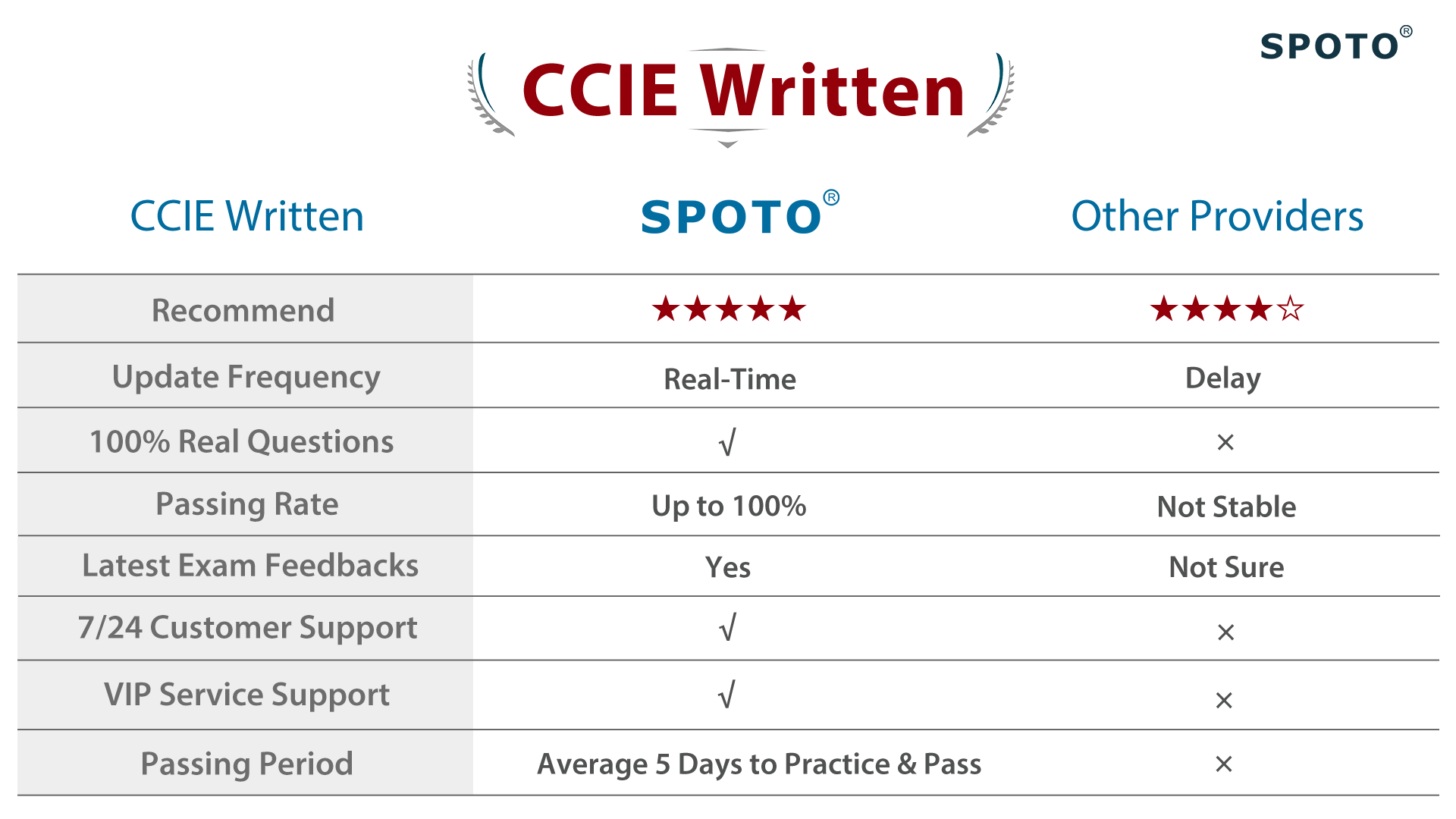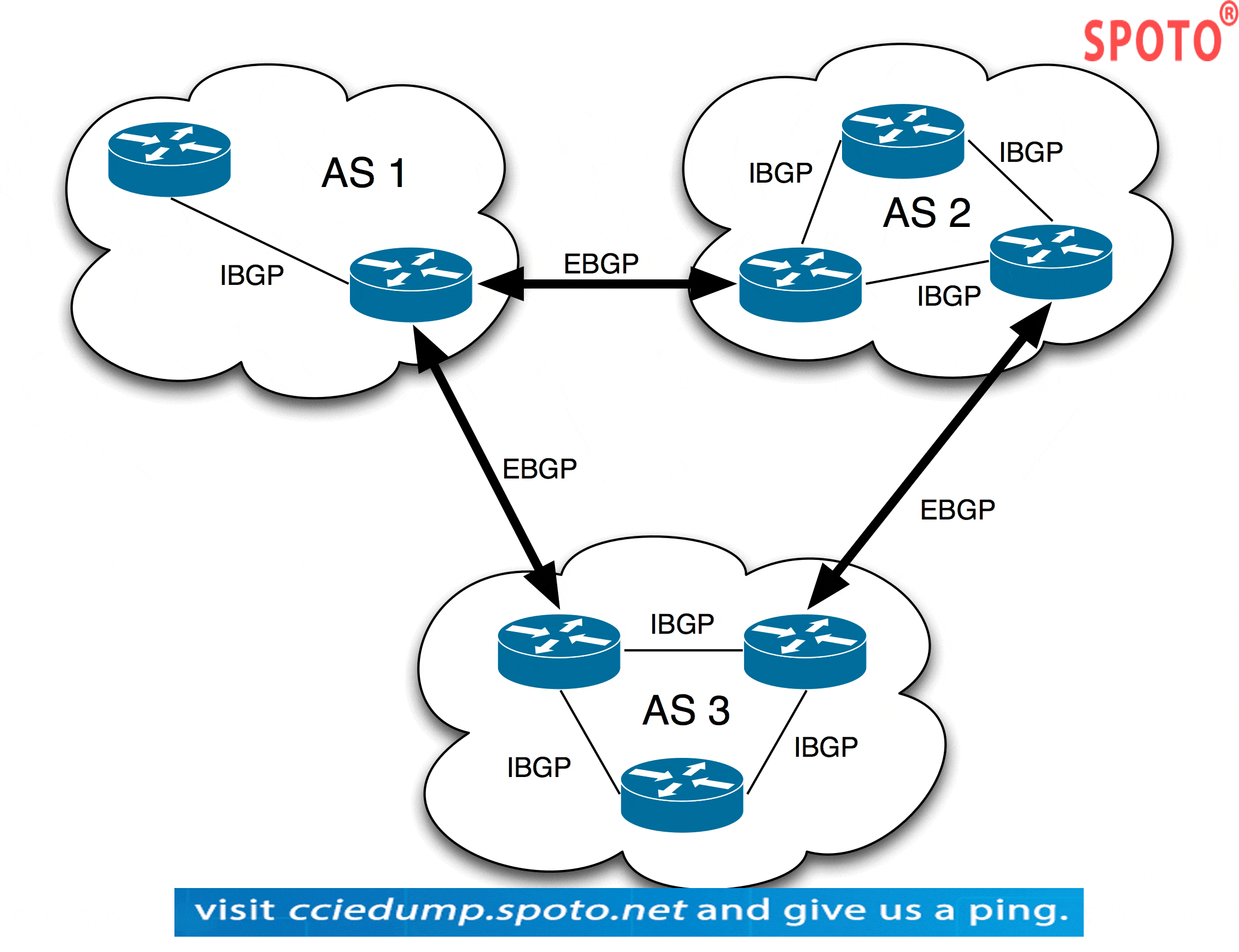CCIE Routing and Switching Certification could be very tough to gain. Also, it is quite worthy if you have one. CCIE Routing and Switching are considered to be one of the most desired certifications, which a candidate could have in order to enhance their career. So, either you would have to go for the immense study path, or you could join one of the courses, provided by the SPOTO and help yourself out for clearing the CCIE R&S Exam, in one go. Below mentioned are some notes regarding the BGP, it would help you out in your journey of CCIE R&S Certification.
BGP:
• BGP neighbor addresses have to be in the local routing table. Following a default route will NOT work
• Next-hop for eBGP routes will NOT follow a default route. i.e. if you have a BGP speaker advertising BGP routes to its iBGP peers, that iBGP will not install that route into their rib if they don’t have a route to the next-hop. A default route doesn’t count!
• When advertising a network in BGP via the network command, there has to be a match in the local RIB, otherwise, it won’t be advertised – An Inject-map can be used to change this slightly
• By default, BGP neighbors are expected to be directly connected. If not, or peering via loopbacks, there are 3 ways to change this behavior
1. ebgp multihop (TTL)
2. disable-connected-check
3. TTL-security hops
• ebgp multihop will increase the TTL to whatever value you want it to be
• disable-connected-check does not increase the TTL, but will allow routers to peer if the peer address is directly connected (like a loopback)
• ttl-security hops would send the BGP requests out with a ttl of 255, but the incoming value needs to be 255 minus the value you set.
Confederations:
• inter-sub-as neighbors will need ebgp multihop configured if not directly connected!
• bgp confederation peers x x x only really needs to be configured on the confederation BGP speakers that connect to different confederation AS numbers in the same confederation. It won’t be hurting to configure it all on all of them though
• BGP confederation identifier (external AS) would be needed to be configured on all confederation BGP speakers
Dampening:
• BGP dampening is considered a global command that enabled dampening
• bgp dampening (half-life) (reuse) (suppress) (max-suppress) [route-map](map)
1. Half-life – Time before penalty cut in half (15min default)
2. Reuse – Low threshold where route reused (750 default)
3. Suppress – High threshold where route suppressed (2000 default)
4. Max-compression – Max time to be suppressed (60 min default)
• The default penalty for a flap would be about 1000
• These are sliding scales. That means that if a route flaps it’ll get 1000 points, but would also start losing points 1 by 1 straight away
• If you want to ensure certain routes are not dampened, create a route-map that denies the routes you don’t want to be dampened, and allow everything else
• When dampening though a route-map, you need to set the dampening values in the route-map itself, even if they are the defaults!
Redistribution:
• When redistributing from BGP into an IGP, by default no BGP routes will be redistributed, only eBGP. To ensure BGP routes are distributed, you need to configure BGP redistribute internal under the BGP process. This could very easily cause loops so be careful!
So, after going through this notes, and if you are willing to gain access to the full study dumps, you could just join the SPOTO and have it all to clear your exam in one go. There are many advantages to the CCIE RS written exam.


 Join Telegram Study Group ▷
Join Telegram Study Group ▷














